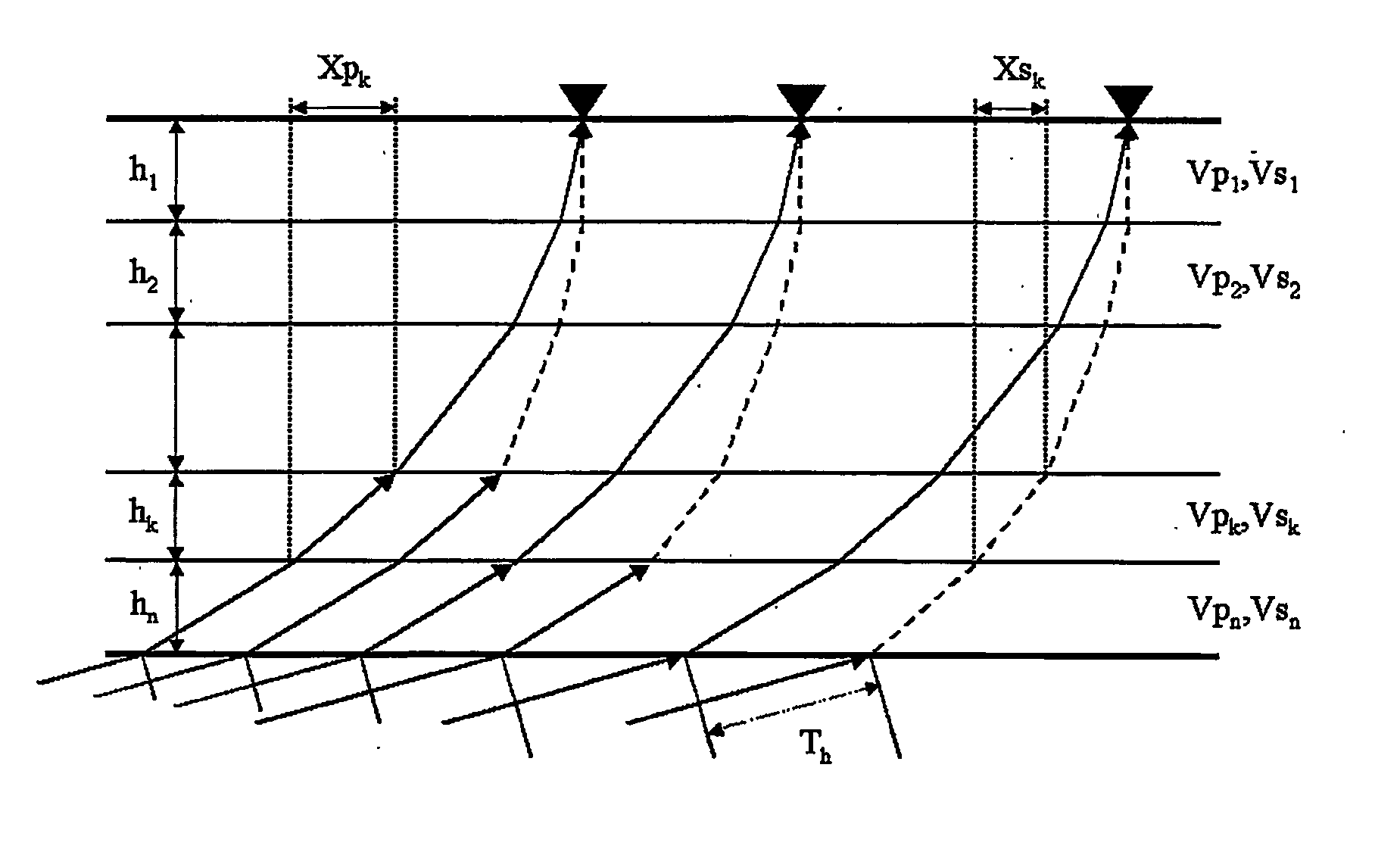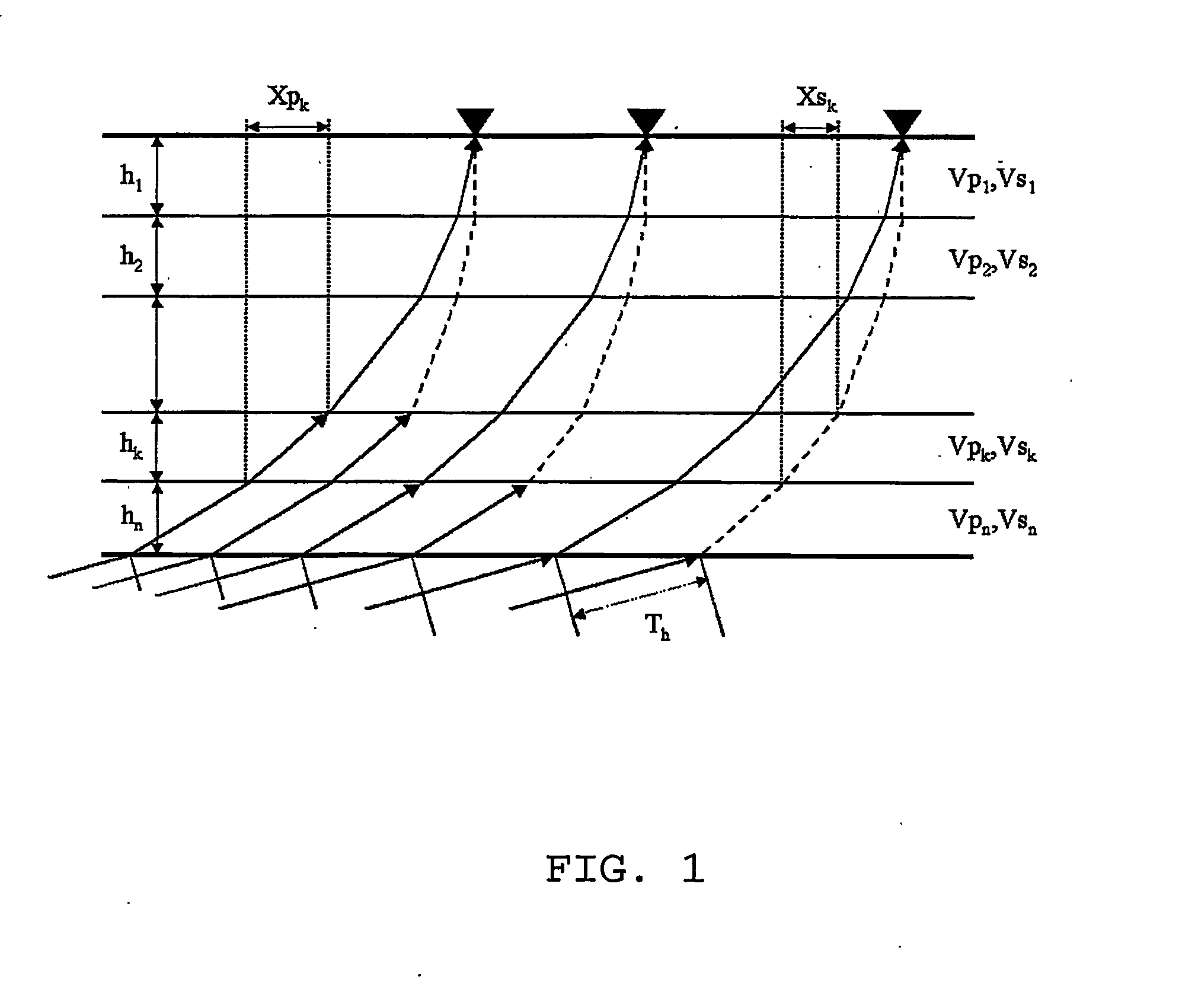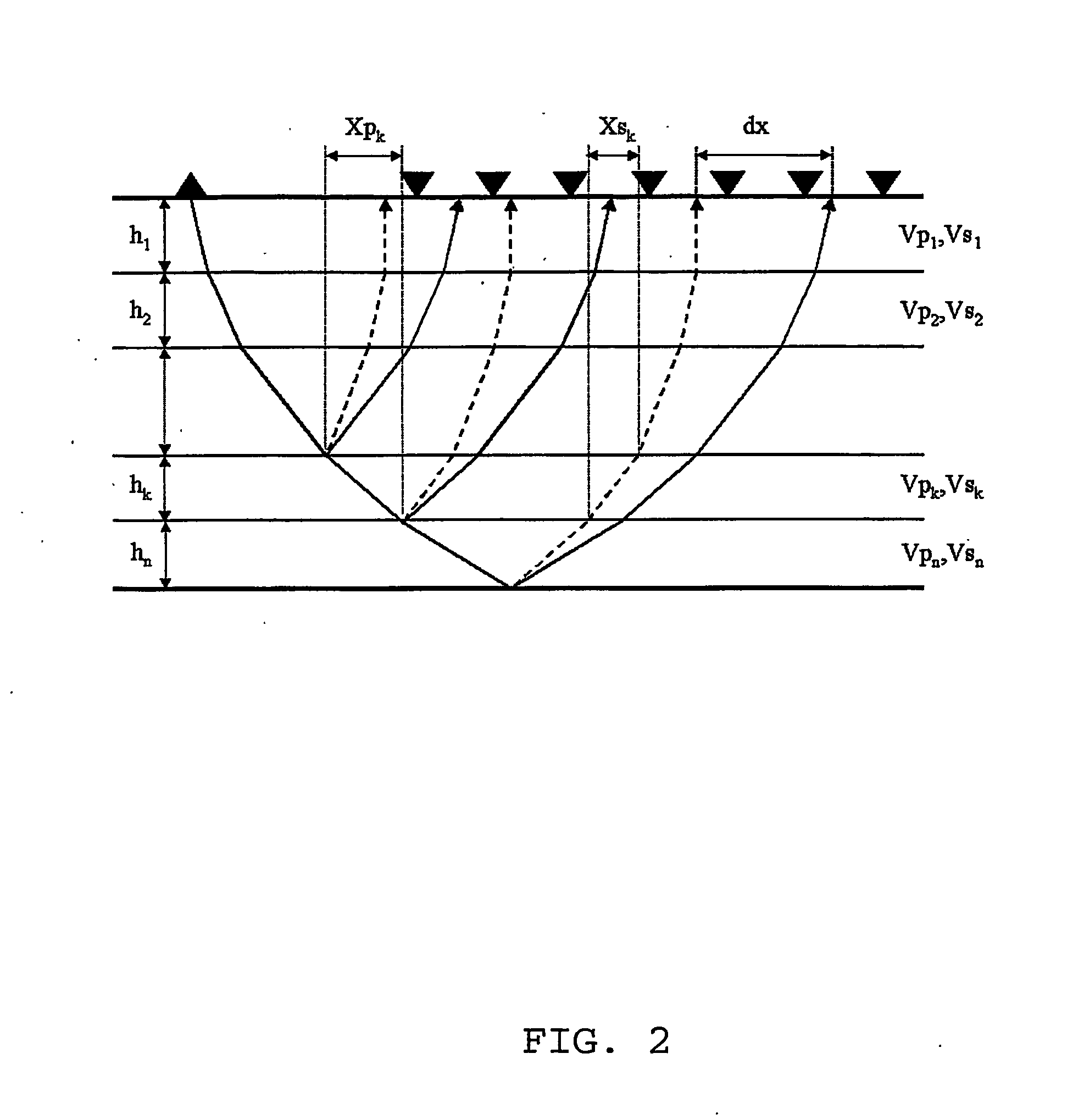Multi-Component Seismic Data Processing
- Summary
- Abstract
- Description
- Claims
- Application Information
AI Technical Summary
Benefits of technology
Problems solved by technology
Method used
Image
Examples
numerical examples
[0081]In the following it is illustrated how the derived approximations may be used with some numerical examples.
example 1
Moveout Correction Using the Two-term Approximation in the Slowness Domain
[0082]Synthetic data was calculated using a 2D reflectivity code for a horizontally layered model consisting of 6 homogeneous layers overlying a halfspace. The medium properties are summarised in Table 1. In the synthetic experiments, 801 receivers were positioned symmetrically about the source position with a receiver-receiver spacing of 3.125 m. Thus, the maximum source-receiver offset considered here is 1250 m. The sampling rate was 2 ms. The source in the modeling was a P-wave point source, positioned on the surface, emitting a 50 Hz Ricker wavelet. As pre-processing step the data were transformed to the time-slowness (τ,p) domain. The pre-processed reflectivity data is shown in FIG. 3.
[0083]The receiver functions, calculated by stabilised deconvolution, for this data are shown in FIG. 4A. The theoretical traveltime differences between the PS-converted waves and primary P-reflections are calculated by ray-...
example 2
Moveout Approximations of the Traveltime Difference as a Function of the Difference in Horizontal Distance Traveled
[0086]In this example we use the exactly the same reflectivity data as was used in example 1, with the exception that the input data is not transformed to the time-slowness (τ,p) domain. Instead, as proposed in the section on series approximation of the traveltime difference as function of the difference in horizontal difference, we calculate a new type of receiver function formed by two-dimensional (2D) deconvolution of the vertical component (upgoing P-waves) out of the radial component (upgoing S-waves) data in the (x,t) domain. Two-dimensional deconvolution in the (x,t) domain is equivalent to division of each point in the corresponding frequency-wavenumber (f,k) domain. Hence, individual plane PS-wave components are shifted in time and space relative to the arrival time and location of the P-wave components with the same frequency and (horizontal) wavenumber.
[0087]...
PUM
 Login to View More
Login to View More Abstract
Description
Claims
Application Information
 Login to View More
Login to View More - R&D
- Intellectual Property
- Life Sciences
- Materials
- Tech Scout
- Unparalleled Data Quality
- Higher Quality Content
- 60% Fewer Hallucinations
Browse by: Latest US Patents, China's latest patents, Technical Efficacy Thesaurus, Application Domain, Technology Topic, Popular Technical Reports.
© 2025 PatSnap. All rights reserved.Legal|Privacy policy|Modern Slavery Act Transparency Statement|Sitemap|About US| Contact US: help@patsnap.com



